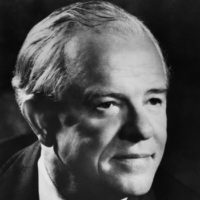
F. Mason Sones, Jr.
Cleveland Clinic Foundation
For combining the techniques of cardiac catheterization and coronary artery cinematography, thus inaugurating the modern era of diagnosis and treatment of coronary artery disease.
Because of Dr. Sones's daring innovations, new standards of diagnosis in cardiology have evolved, transforming the entire field and making possible many breakthroughs in the treatment of coronary artery disease.
As one of the first pediatric cardiologists, Dr. Sones pioneered the use of image amplification in the fluoroscopic study of congenital heart defects.
In 1959, Dr. Sones discovered that, by using a catheter, contrast medium could be safely injected into the coronary arteries. He and his associates quickly began to integrate this means of delineating specific portions of the vessels with cinematography. For the first time, physicians and surgeons could visualize the exact location of obstructions in the vessels that feed the heart.
The direct and indirect value of Dr. Sones's work is incalculable. The Sones approach, and the "Sones catheter" which he invented, opened the way to the rational planning of surgery to correct coronary artery obstructions, and to evaluate the results of treatment. As many as 170,000 coronary bypass operations are now performed each year in the United States, with remarkable safety and extraordinary benefits to patients. Dr. Sones's contributions made these operations possible.
Coronary arteriography has also made it possible to assess vasomotor spasms, to study drugs developed to treat heart diseases, and to broaden the understanding of the dynamics and physiology of the heart.
To Dr. Sones, for brilliantly combining the techniques of cardiac cauterization and coronary artery cinematography, thus inaugurating the modern era of diagnosis and treatment of coronary artery disease, this 1983 Albert Lasker Clinical Medical Research Award is given.
